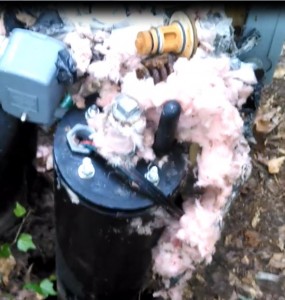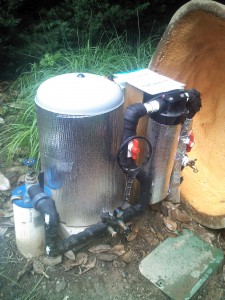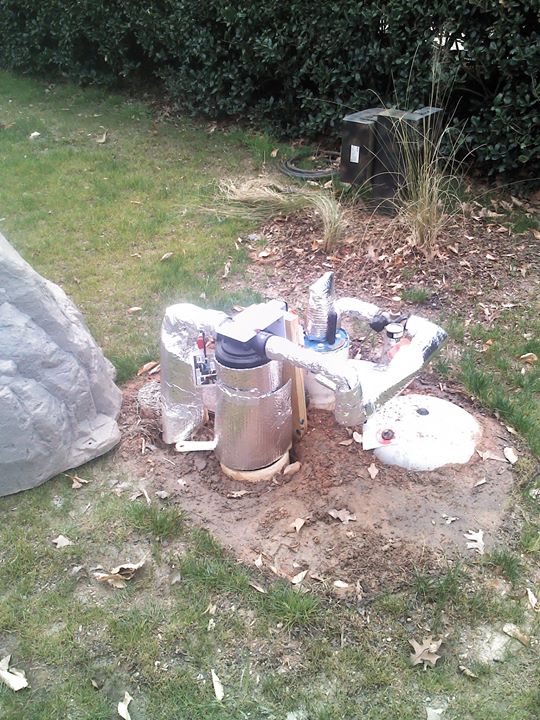
Fiberglass batt or roll insulation is the most common winter protection we see in wellhouses. It is cheap, easy-to-install, and it’s layers of fluff are well-known for their insulating properties.
So long as it stays dry and secure from rodents, it is an excellent material for the job!
Unfortunately, it’s in a wellhouse, so it might tend to get wet- if not from leaks or periodic service, but from condensation that occurs in the wellhouse, and when that happens, the insulation loses its thermal resistance, making your plumbing and equipment susceptible to freezing and breaking, and it can also cause mold issues to develop in your wellhouse.
Beyond the dampness issue, rats and mice seem to love fiberglass fluff as bedding and nesting material, and since the wellhouse is usually away from the house and hardly ever disturbed, they will tend to find a way in and make themselves at home. This will lead to all sorts of biological contaminants of your water source that could make you or a loved one really sick!
Besides the problems above, the stuff is ITCHY!
We recommend a different solution:

Radiant Barrier insulation is just a bit more expensive than fiberglass. It goes on with tape (or hook and loop, for equipment that requires access), and can be cut and built into shapes just like a cardboard box.
It is basically a double layered plastic bubble wrap which has been laminated on both sides with aluminum foil. This material has an R Value of between 3.7 and R-21, depending on application, but it is more than sufficient to keep the heat from a heat tape on the plumbing where you want it.
It does not lose it’s thermal resistance when it gets wet, and it does not provide any fluff for rats and mice to build with. In fact, rodents really don’t seem to like to chew on aluminum foil (where there is no food on the other side).
We’ve been using this material for a couple years now in a broadening test group of water systems, and found that it not only performs at least as well as other insulation methods, it also helps keep our customers’ water source looking clean and tidy. And since noone wants to drink out of a dirty glass, why would anyone chose to leave their wellhouse a nasty, rat-infested, moldy hovel when they don’t have to?
Oh yeah- did I mention that it DOESN’T ITCH!!!



Pingback: sCaRy WeLL sToRieS, Vol. 3 | Miller Well Drilling
Pingback: Project of the Week| 11/19/14: Seal Up Your Wellhouse! | Miller Well Drilling
Pingback: Winter's Coming (Brace Yourself) | Miller Well Drilling